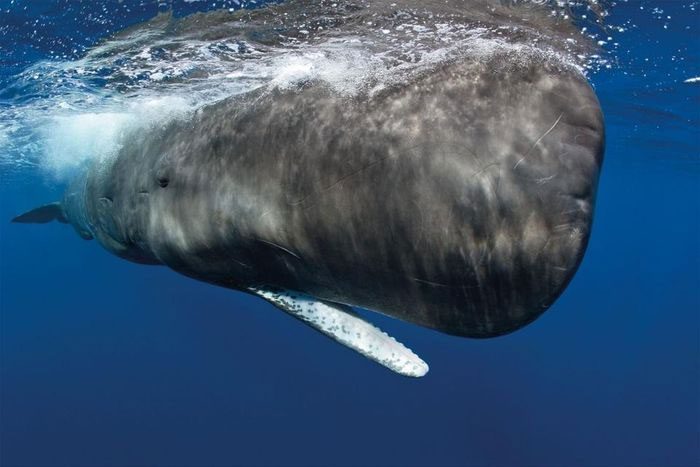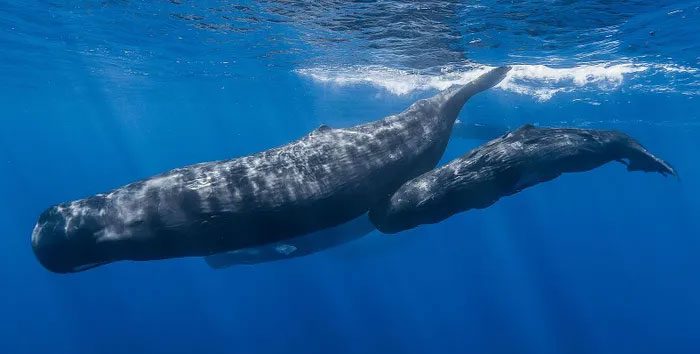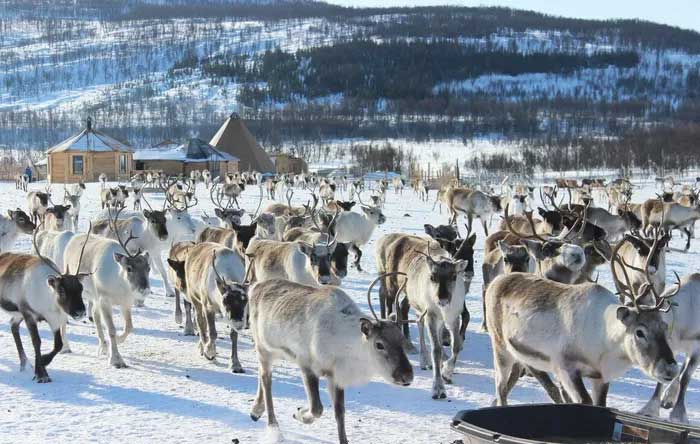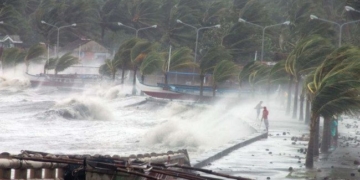Elephants, otters, and whales share a common trait: they all enhance the carbon storage capacity of their ecosystems.
Elephants disperse seeds and trample down low vegetation, which facilitates the growth of taller trees. Sea otters consume sea urchins, promoting the growth of kelp forests.
Whales feed at depths and release nutrients when they breathe and rest on the surface, stimulating phytoplankton production.

Every whale living in the ocean is a giant carbon-capturing “factory.” (Photo: Brandon Cole).
However, beyond these three benefits, humans are beginning to recognize that many species have complex impacts on their environments, altering the amount of carbon stored by surrounding ecosystems, ultimately affecting climate change.
When the wildebeest population in the Serengeti plummeted due to disease, they were no longer grazed heavily, leading to increased grass growth and more frequent, severe fires. Controlling disease and increasing the wildebeest population, therefore, equates to fewer fires.
The reduction in the frequency and intensity of wildfires also means that the Serengeti could transition from carbon release to carbon storage.
This example is highlighted in a recent article published in the journal Nature. It demonstrates that animals help ecosystems store carbon more effectively through their feeding, movement, trampling, digging, nesting, and even defecating.
Enormous Potential
A newly published report states that restoring and protecting the functional roles of animals in ecosystems is an overlooked climate change solution, according to Mongabay.
“Conserving wildlife and allowing species to fulfill their functional roles in ecosystems offers untapped potential as a climate change solution,” said Andrew Tilker, co-author of the report and species conservation coordinator at the NGO Re:wild.

A sperm whale and its calf. (Photo: Gabriel Barathieu).
According to the report, the rewilding of just nine wildlife species or groups (African forest elephants, American bison, fish, gray wolves, musk oxen, sea otters, sharks, whales, and wildebeests) could contribute over 95% toward the global goal of removing 500 billion tons of carbon dioxide from the atmosphere by 2100.
This would help limit the increase in global temperatures to below 1.5 degrees Celsius compared to pre-industrial levels, as called for in the Paris Agreement.
Considering a range of different studies, the report concludes that wildlife represents only 0.3% of the total carbon in global biomass, yet they can influence the carbon storage potential of a given ecosystem by 15-250%.
Reducing carbon emissions is an undeniable solution to address the global climate crisis, but even if humans were to stop burning fossil fuels immediately, the climate would continue to warm due to the excess carbon already trapped in the atmosphere.
“Fortunately, we have technology to remove CO2 from the atmosphere,” said the lead author of the report, Oswald Schmitz, a professor at Yale School of the Environment. “That’s called nature.”
Important Lessons
This new research offers crucial lessons on how humanity pursues nature-based solutions, as shared by Matthew Gould, CEO of the Zoological Society of London (ZSL), to The Guardian.
Firstly, nature has an impact. Specifically, the complex mechanisms that nature has developed operate remarkably well in ways that humans have yet to fully understand.
Matthew argues that it is unreasonable to overlook the proven measures that nature provides. The current focus of nature-based solutions is on plants, such as restoring mangroves, kelp, and seagrass.
The journal Nature also cites the Arctic as an example, where a large amount of carbon is stored in permafrost. Ensuring large animal populations will help keep carbon there by compacting snow and keeping the ground frozen. Restoring populations of caribou, wild horses, musk oxen, and American bison could be an essential part of that effort.

Reindeer in Norway. (Photo: Piia Kemppinen/Tromsø Arctic Reindeer).
Secondly, regarding conservation efforts. According to Matthew, there are many examples of successful conservation, from the return of red kites in the UK to the recovery of tigers across Nepal and India.
“When I took this job, a small part of me was worried that working on wildlife issues was a bit ‘luxurious’ amidst the significant threats posed by climate change,” the ZSL leader shared.
“Now we know that the opposite is true. Understanding the role of animals in helping nature capture and store carbon is profoundly significant for how we approach conservation,” he said.
He believes that the old conservation model—through segregation, separating nature from humans to let it thrive—is outdated. It is simply insufficient.
“Our focus is on helping wildlife and humans coexist by supporting conflict reduction and collaborating with communities that play a vital role in the health of wildlife,” Matthew stated.
This approach has enabled local communities to establish their own pangolin sanctuaries on Palawan Island in the Philippines, while also identifying conservation solutions to protect the endangered angel shark off the coast of the UK.
This holds true for cities as well as the Serengeti. As a recent report explains, nature can also help mitigate the impacts of extreme weather in urban areas.
According to him, a world where wildlife thrives is also a resilient world necessary for coping with and mitigating the climate crisis.
“The future of humanity is closely tied to the well-being of wildlife species worldwide,” Matthew shared. “If we want to save ourselves, we need to do a better job of protecting them.”


















































